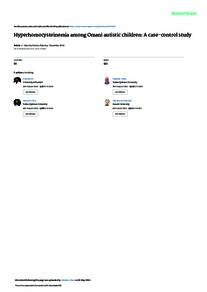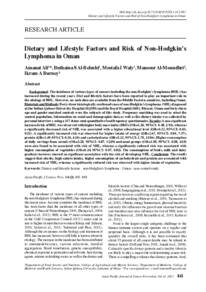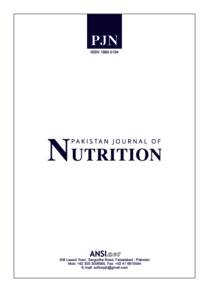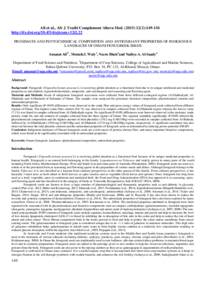Document
Hyperhomocysteinemia among Omani autistic children : a case-control study.
Identifier
DOI: 10.18388/abp.2011_2223
Contributors
Waly, Mostafa I., Author
Al-Farsi, Yahya M., Author
Essa, Musthafa M., Author
Al-Sharbati, Marwan M., Author
Deth, Richard C., Author
Publisher
Acta Biochimica Polonica.
Gregorian
2011-12
Language
English
Subject
English abstract
High serum homocysteine (Hcy) level is regarded as an indicator for impairment of folate-dependent methionine cycle and is associated with oxidative stress. In a case control study, we evaluated eighty 3-5 years old Omani children (40 diagnosed with Autism Spectrum Disorder and 40 their age and gender matched controls) for their fasting serum homocysteine levels as a biomarker of Autism Spectrum Disorder (ASD). Serum folate and vitamin B12 status were also evaluated. The serum homocysteine was measured using an enzyme immunoassay (EIA) technique whereas folate and vitamin B12 were measured using an automated random access immune-assay system. The results indicated that mean serum Hcy levels were significantly (P < 0.05) higher in autistic children (20.1 ± 3.3 μmol/L) as compared to controls (9.64 ± 2.1 μmol/L). Significantly (P < 0.05) lower serum folate (1.8 ± 0.4 μg/L) and vitamin B12 (191.1 ± 0.9 pg/mL) levels were observed in autistic children as compared to controls (6.1 ± 0.6 μg/L and 288.9 ± 1.3 pg/mL, respectively). The levels of homocysteine in autistic children were also much higher as compared to normal reference values (5-15 μmol/L). The results suggest that high fasting serum homocysteine and low folate and vitamin B12 levels could be used as clinical biomarkers for an early diagnosis and management of ASD.
Member of
ISSN
0001-527X
Resource URL
Category
Journal articles




